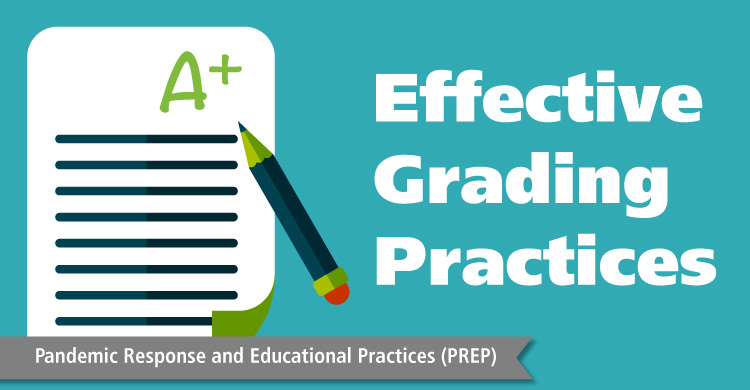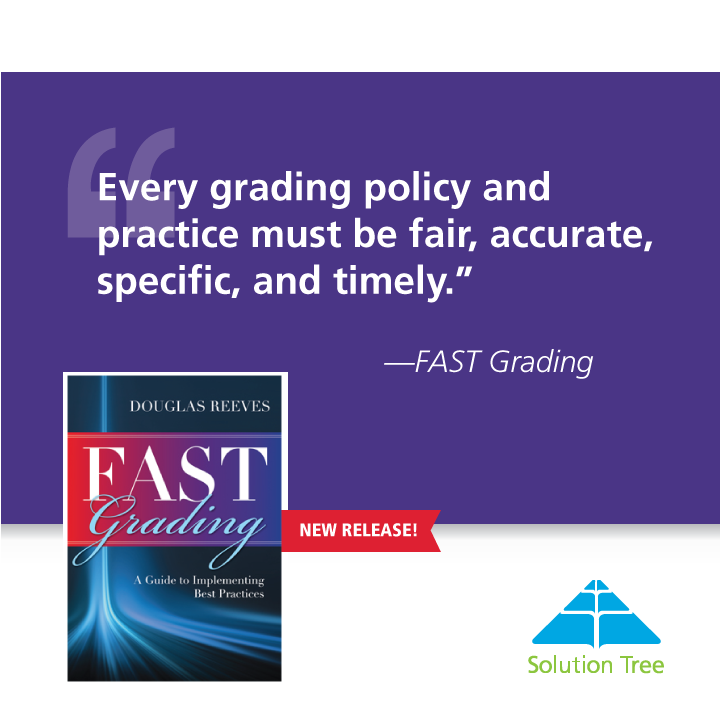This entry is the ninth in a blog series called Pandemic Response and Educational Practices (PREP), which aims to highlight and further the important work educators are doing amid the worldwide COVID-19 crisis.
Based on FAST Grading: A Guide to Implementing Best Practices
With almost all schools in the United States and Canada closed, and countless more around the world, leaders and policymakers share a legitimate concern about educational equity in grading. While some students have been able to continue their lessons with online learning, many others cannot. Some families lack computers and internet connectivity. Other families have a computer and internet service, but with parents and siblings all competing for the same computer and bandwidth, it is almost impossible for any individual child to have continuous access to online learning.
States and school districts are taking two strikingly different approaches to this challenge. While both approaches justify their policies in the name of educational equity, one represents the path toward progress, and the other deeply misguided approach is the path of despair and growing inequity.
Here are steps schools can take right now to provide the feedback and grades that students need while preserving their commitment to equity.
Know where students stand for fall 2020
For grades K–8, schools should provide a reading and math level, along with two or three learning objectives, for each student. They may not have sufficient information to complete report cards, but schools can at the very least let parents—and the teachers for the fall of 2020—know where each student stands in terms of reading and math skills. Teachers can also provide two or three learning objectives for each student, so that teachers in the fall of 2020 are set up for the differentiated instruction they will surely need.
Use the most appropriate data, and use it responsibly
For high school students, teachers can provide the necessary letter grades and transcripts, but they can follow the “do no harm” principle. This means that teachers must not use the average of student performance throughout the semester, as that would penalize students for missing assignments in March, April, and May. What teachers can do is to use the latest and best evidence of student performance.
For students with zero access to technology during the past few months, the latest and best evidence may be in February. Other students are thriving in a virtual environment, and the latest and best evidence for them will be at the end of the semester in May or June. This means that some students may have 20 pieces of work to be evaluated, and others may have five. Equity does not mean the illusion that all students had the same opportunity for proficiency, but rather that all students had the opportunity to submit their best work for evaluation by the teacher—whether that work was submitted in February or later.
I encourage high school educators and administrators to resist the siren song of pass/fail grading. Some districts have already decided that “everybody gets an A,” or “everybody will get a pass.” While this may appear to be politically attractive, it does grave damage to high school juniors and seniors who are competing for scarce scholarship dollars. The scholarship committees can’t tell the difference between an A and a D-minus in a system where everyone gets the same grade. For economically disadvantaged students, scholarships are the only path out of poverty, and to deny those students the opportunity to compete successfully for those scholarships is the opposite of equity. While many well-intentioned people advocate pass/fail grading in the name of equity, I would argue that these policies accomplish precisely the opposite.
Move away from the 100-point scale
Administrators must disable electronic grading systems that default to the average or the 100-point scale. Both of these elements of traditional grading systems are deeply flawed. The average punishes students at the end of the semester for the mistakes of February. The 100-point scale, along with the use of the zero, creates the opportunity for an academic death penalty, especially when a single zero can wipe out the impact of many weeks of excellent performance.
Moreover, the 100-point scale creates the illusion of precision when, in reality, it provides a distinction without a difference. Teachers can consistently tell the difference between work that earns an A, B, C, or D, but they cannot meaningfully distinguish between the 82 and 83. This is also an opportunity to embrace the Latin honors system of “highest honors, high honors, and honors,” and an opportunity to end the nonsense that presumes that a 3.9995 is different from a 3.9994, or that a 98.5 is different from a 98.4. It’s far better to establish a consistent system in which students with grade point averages of 3.9 or higher, who have also demonstrated integrity and service, receive highest honors. Those with GPAs of 3.7 and 3.8 receive high honors, and those with 3.5 and 3.6 receive honors. Faculties may want to add additional criteria—such as integrity, service, and leadership—but it is time to stoop the statistical fantasy that spates the honors bestowed on students based on a fraction of a decimal point.
Don’t panic
Let us not fill in the silence from students during this crisis with our worst fears. Some students may be silent because they have just checked out of school, but if we ask, one-to-one in confidential phone calls, we may find other students who don’t have connectivity, who have sibling care responsibilities throughout the day, or who are sharing their computer with adults and other students in the home. School schedules that assume students can simply show up at 9 a.m. do not recognize these wide variants in family situations.
Finally, let us think about school long after the COVID-19 crisis. Now is the time to make structural changes in grading and feedback systems for students. In my work on the subject, I have argued that grading systems must be “FAST”—fair, accurate, specific, and timely. We can achieve that with some basic fixes to grading systems before the fall of 2020. These include the elimination of the average, the return to the traditional A, B, C, D, and F system rather than the 100-point scale, and the elimination of nonacademic factors in grading students.
Grading is one of the most emotionally volatile subjects in education, and many leaders and policymakers fear making changes in it. But the evidence is clear: when we improve grading systems, there are fewer failures, better discipline, better attendance, and better faculty morale. In sum, it is a difficult but worthwhile pursuit.
[author_bio id=”108″]







